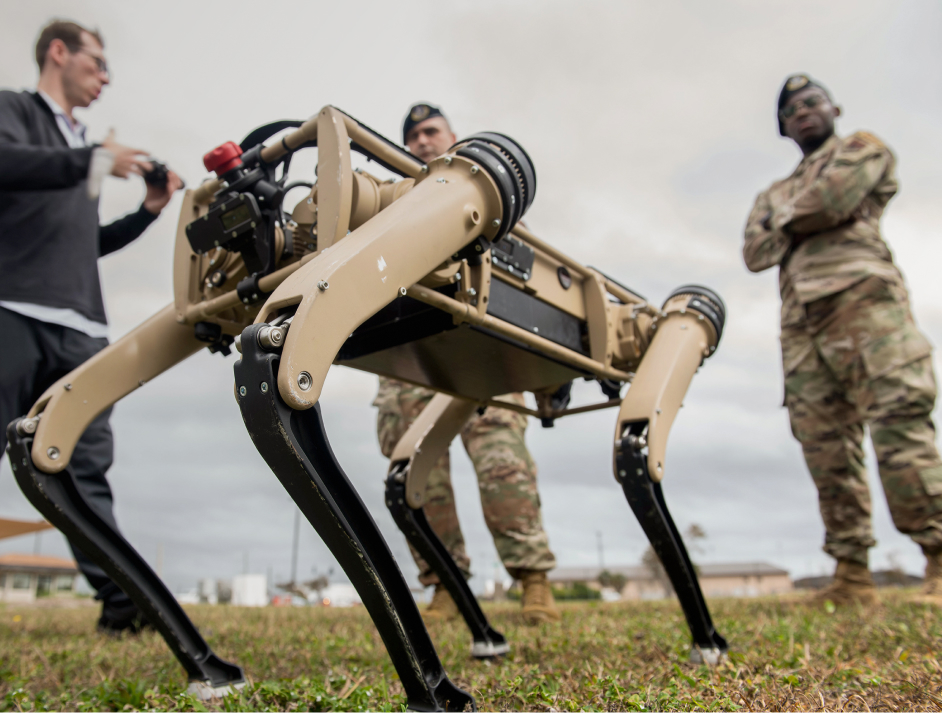Defense organizations worldwide face critical staffing shortages, increasingly complex threats, and significant environmental risks. These challenges underscore the need for innovative solutions to enhance warfighter safety, operational effectiveness, and efficiency.
Unmanned systems offer an edge to military and intelligence communities. They offer unprecedented potential to reshape defense capabilities as they evolve, particularly within integrated Command, Control, Computers, Communications, Cyber, Intelligence, Surveillance, and Reconnaissance (C5ISR) frameworks.
Efficiency Gains & Operational Advantages
Unmanned systems promise exceptional efficiency and operational continuity. These technologies enable operations that persist beyond human endurance, overcoming challenges related to human fatigue. They further provide significant cost benefits by reducing personnel exposure to high-risk environments and cutting operational expenses typically associated with manned missions.
Seamless interoperability is another core advantage of unmanned systems. Future platforms will integrate fluidly with existing manned assets and support collaborative operations with allied forces, ensuring operational coherence and maximizing mission effectiveness.
The Unmanned Systems of the Future
Aerial Systems (UAVs)
Unmanned aerial vehicles (UAVs) have progressed rapidly, with advancements in artificial intelligence (AI)-driven drone swarms capable of synchronized combat operations. Autonomous combat drones and hypersonic-enabled ISR (Intelligence, Surveillance, Reconnaissance) platforms represent the cutting edge of aerial technology.
Developments such as the MQ-25 Stingray, designed for autonomous aerial refueling, and Kratos’ XQ-58A Valkyrie, which operates as a loyal wingman, demonstrate a future of aerial dominance marked by increased autonomy and efficiency in reconnaissance, refueling, and electronic warfare missions.
Surface Systems (USVs)
Autonomous surface vessels are poised to redefine maritime defense operations. Future capabilities include AI-powered fleet coordination, fully autonomous logistics, and enhanced anti-submarine warfare. The next-generation Sea Hunter-class USVs exemplify these advancements, providing persistent surveillance, fleet protection, and logistical support, significantly reducing human risk and operational costs.
Underwater Systems (UUVs)
Undersea defense operations are equally benefiting from autonomy. Advances in subsea intelligence gathering, autonomous deep-sea mine neutralization, and stealth capabilities will dominate future naval strategy. For example, the Boeing Orca Extra Large Unmanned Undersea Vehicle (XLUUV) will carry out complex operations autonomously, enhancing sensor fusion and mission adaptability in challenging underwater environments.
C5ISR Use Cases
Unmanned systems significantly enhance the capabilities of C5ISR operations, providing sophisticated AI-enabled support for decision-making and command execution. AI algorithms streamline complex data analysis, enabling rapid and accurate assessments crucial in time-sensitive military scenarios. Autonomous decision-support systems help commanders identify emerging threats and opportunities with unprecedented speed, enhancing strategic flexibility and operational agility.
Further, autonomous platforms extend secure communications into contested or denied environments, ensuring persistent battlefield connectivity and information exchange. With robust cybersecurity frameworks, these unmanned assets mitigate vulnerabilities associated with traditional communication systems.
Real-time ISR capabilities also greatly benefit from multi-domain sensor fusion technologies. Unmanned platforms integrate and analyze data across air, sea, and land domains, delivering comprehensive situational awareness and predictive insights. Persistent autonomous surveillance enhances the quality and immediacy of intelligence, allowing forces to anticipate adversary actions and maintain strategic initiative.
Challenges & Considerations
The rapid evolution of unmanned systems introduces complex operational challenges that defense organizations must proactively manage. Determining appropriate levels of autonomy, maintaining human oversight, and ensuring effective human-machine teaming all require clear operational frameworks and rigorous training protocols. It is equally essential to develop adaptable, resilient mission profiles that respond dynamically to shifting operational environments.
Increased reliance on AI and interconnected systems heightens the need for robust cybersecurity to counter unseen threats. Defense organizations should employ advanced strategies to safeguard their autonomous operations, including AI-driven threat detection, robust encryption standards, and continuous monitoring.
The development and deployment of autonomous systems must also align with international humanitarian laws, policies, and ethical standards. Clearly defined rules of engagement and accountability frameworks are imperative to manage the operational and moral risks associated with deploying fully autonomous systems.
Looking Ahead
The future of unmanned systems in defense promises significant advancements through emerging technologies such as quantum computing, edge AI, and next-generation autonomous warfare capabilities.
Quantum computing will accelerate data processing speeds, drastically improving analytical capabilities and response times. Edge AI will decentralize processing power, enabling unmanned systems to make sophisticated real-time decisions independently, even in environments with limited connectivity.
These innovations point towards a future of fully autonomous defense operations, fundamentally changing the dynamics of military engagement. Strategic foresight, agile innovation, and proactive adaptation will be vital to maintain operational supremacy across—and after—this paradigm shift.
Defense organizations seeking operational superiority should consider strategic collaborations to accelerate technology adoption and integration. Strong public-private partnerships will drive the pace and effectiveness of innovation, accelerating technology adoption and ensuring defense organizations can leverage the full transformative potential of these technologies.
Finding Your Solid Technological Partner
Prescient Edge is the premier partner for organizations committed to capitalizing on unmanned defense innovations. With expertise in integrating cutting-edge technologies, Prescient Edge empowers defense operations with tailored autonomous solutions to achieve superior strategic outcomes.
To successfully navigate the future of defense and leverage unmanned systems to their full potential, contact Prescient Edge today and take your defense capabilities to the next level.
***INSERT TIME READING BELOW****
7 Mins Read

